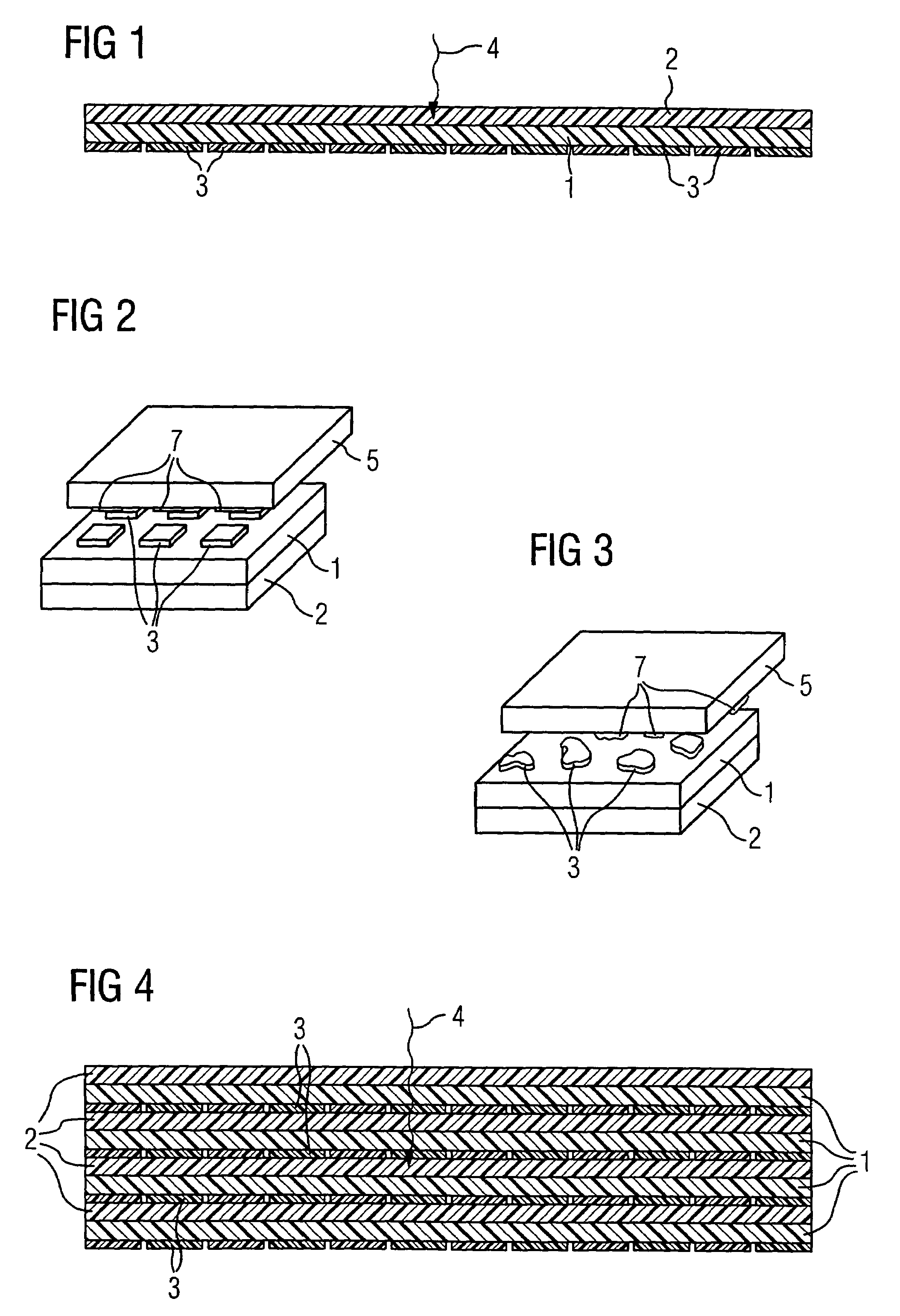Image detector for X-ray radiation
a technology of x-ray radiation and image detector, which is applied in the direction of x/gamma/cosmic radiation measurement, radioation controlled devices, instruments, etc., can solve the problems of not allowing energy-resolved x-ray radiation detection, not the case for x-ray radiation, and complex construction of known image detectors. achieve cost-effective production and sufficient sensitivity to x-ray radiation
- Summary
- Abstract
- Description
- Claims
- Application Information
AI Technical Summary
Benefits of technology
Problems solved by technology
Method used
Image
Examples
Embodiment Construction
[0019]FIG. 1 illustrates an X-ray image detector according to the prior art. A luminescent material layer 2 is applied on the carrier film 1. The radiation 4 to be detected excites said luminescent material layer to emit radiation of a changed wavelength. Organic photosensors 3, in this case photodiodes, are applied on the other side of the carrier film 1 and are able to detect the radiation emitted by the luminescent material layer 2.
[0020]The organic photodiodes 3 operate as active image detectors, i.e. upon excitation by radiation they liberate charge carriers which are then detected directly. Thus, a detection always take place directly at the point in time when radiation occurs. Active image detectors are thus unlike passive image detectors such as CCDs (charge coupled device), which, having been excitated by radiation, liberate charge carriers and store them until the charge carrier stores are read. The function of CCDs is based on a specially adapted semiconductor band model ...
PUM
 Login to View More
Login to View More Abstract
Description
Claims
Application Information
 Login to View More
Login to View More - R&D
- Intellectual Property
- Life Sciences
- Materials
- Tech Scout
- Unparalleled Data Quality
- Higher Quality Content
- 60% Fewer Hallucinations
Browse by: Latest US Patents, China's latest patents, Technical Efficacy Thesaurus, Application Domain, Technology Topic, Popular Technical Reports.
© 2025 PatSnap. All rights reserved.Legal|Privacy policy|Modern Slavery Act Transparency Statement|Sitemap|About US| Contact US: help@patsnap.com


